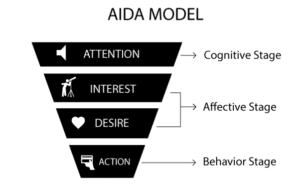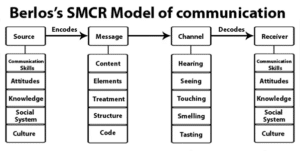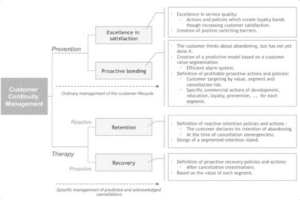BUS7B33 Customer Continuity and Growth
Introduction
Communication strategies within an organisation are highly necessary to manage different operations and ensure the proper execution of the targeted goals. The current report will be highly focused on Clarks, a shoe manufacturing and marketing company within the domain of the UK. Based on assignment 1, the company is observed to be following a communication strategy that helps in operating systems within the market. However, this report will be proposing a new and improved strategy of communication that will benefit the company in the long run. Apart from that, focusing on customer continuity and growth, the current report will also discuss a detailed plan of implementation for the marketing strategy that has been put forward in assignment 1.
Proposed strategy
Clarks have been observed to be operating within the domain of the UK since its establishment in 1825 (Clarks.co.uk. 2022). The company specialises in producing high-quality shoes with different designs that mainly attract huge numbers of customers in the national and international areas. This also helps the company to create a high market presence in the targeted nations. Based on the previous assignment it can be observed that Clarks follows a suitable strategy of communication that helps the company to reach its targeted market audiences and helps to execute its targeted goals effectively. As illustrated by Rojas-Torrijos et al. (2020), the strategy of communication is effective in reaching targeted customers and analysing the issues faced by them. Often communication with customers also helps in analysing the strong points within the company that can be enhanced for future development. However, Clarks in the current scenario has been focusing on a social media communication strategy for reaching its young aged customers in order to sell unique and high quality shoes (Clarks.co.uk. 2022).

Figure 1: AIDA Model of communication
(Source: Mumtaz, 2019)
According to Prathapan et al. (2018), social media is an effective and fast strategy of communication. It mainly uses social media sites such as Facebook, Instagram, and others to communicate with customers on a regular basis and maintains a proper profile through this. This strategy is cost effective and consumes less amount of time to reach the targeted audiences. However, the AIDA model of communication interprets that a communication strategy needs to be designed with four main components. These are the power of gaining customer attention, interest, desire and actions for buying the products and services (Mumtaz, 2019). It is because communication with customers is highly effective to make them aware of products and services offered by the company. It also helps in making them acknowledge different benefits that can be gained from the company. Currently, the company uses the messaging system and comment system available on social media sites to communicate with the customers (Abdelkader and RABIE, 2019).
In consideration of the proposed theory, Clarks can be recommended to use the system of chatbots to communicate with all its customers properly. As opined by Constantinovits and Zhang (2018), the system of chatbots is an AI designed technology for communicating with customers in the most effective way. It is mainly an online communication system with the help of text or text-to-speech instances. Ajibade and Mutula (2020) reflected that chatbots provide the facility of connecting directly with live agents of organisations further generating automated conversation for general queries. Considering the AIDA model of communication, chatbots have been observed to be highly effective in engaging with different customers through the medium of social media, phone, emails, and others. Ahmad and Abdullah (2021) pointed out that the strategy of chatbots is not only limited to social media communication as the company used to do previously. Through a high range of available communication strategies, Clarks can be beneficial in communicating with its customers in the most feasible way.

Figure 2: Berlo’s SMCR model of communication
(Source: Muyanga and Phiri, 2020)
On the other hand, Berlo’s SMCR model of communication depicts that proper communication needs to contain a proper source, message, channel and receiver (Muyanga and Phiri, 2020). The model denotes that a proper source requires the skills of proper communication, knowledge, attitude, culture, and social system. Apart from that, messages within the communication system need to have proper content, element, code, structure and treatment that further can be effective in evaluating the subject matter of the sender. Additionally, Maneerutt (2021) evaluated that the channel through which the messages are being sent needs to have proper availability of hearing, seeing, touching, smelling and testing. However, with respect to this, the system of chatbots recommended to be developed by Clarks is effective in having proper instances of seeing and hearing while touching, smelling and testing will not be applied in this scenario as communication only requires the instances of seeing and hearing to understand the messages of the sender. Lastly, as opined by Li (2021), the receiver needs to process proper skills of knowledge, communication, attitude, culture and social system as per this communication model.
Concerning the stated communication model, the recommended system of chatbot implementation within the domain of Clarks is likely to be providing the company with proper results. It is because, García-Sánchez et al. (2020) illustrate that the model denotes proper maintenance of source, message, channel and receiver for executing a proper communication with the customer. As a result of this, implementing chatbots provides a proper source through which the customers can communicate with the company without any barriers. Other than that, the messages sent by the customers are quickly reviewed by the recommended software and it passes the channel of hearing and seeing the message instantly. Lastly, Dewi (2021) opined that chatbot is also recognised to be providing quick response to customers and the notion of the receiver is also met in this communication strategy. Overall, it can be depicted that the system of chatbots can also manage and communicate with all the customers of Clarks.
Implementation strategy
The strategy of implementation is highly required in order to execute required instances within an organisational domain. As per Gabelaia and Tchelidze (2022), improper planning can create several problems within the implementation and can result in its failure as well. Based on assignment 1 it can be found that a plan of building virtual portfolios and applications that can help customers with the modules of self-analysis in terms of shoe choosing has been proposed to the current company. In the opinion of Trenggana et al. (2022), technology plays a crucial role in moulding the demands and preferences of the customers. In respect to this, implementation of the virtual application and portfolio that can help customers to choose their perfect shoes independently with the help of technology can be effective to increase the service quality of Clarks. Moreover, the customers can also be satisfied with the service and it can also help the company to create a loyal base of customers within the market.
In consideration to the customers, continuity and growth model implementation of required instances within an organisation needs certain steps to be followed. It includes excellence in satisfaction, proactive bonding, retention and recovery (Danarahmanto et al. 2020). The areas highlighted within the stated model also help in designing an accurate and high quality service that can satisfy customers within the market. Moreover, Kaur et al. (2022) also pointed out that the customer continuity and growth model also ensures proper management of different actions required for implementing a targeted program or application within an organisation. Based on the notion proposed by the customer continuity and growth model, certain objectives can be followed by Clarks to implement its foot size virtual technology within its organisation [Refer to Appendix]. These includes
- To develop proper policies and procedures to create loyalty bonds with customers
- To introduce AI technology within the organisation
- To ensure proper management and control of the technological instances
- To create proactive bonding with customers
Plans of implementation for Clarks based on the stated objectives have been discussed below.
| Objectives | Actions for implementation | Requirements | Stakeholders involve | Risks involved | Timeline | Key Performance Indicator |
| To develop proper policies and procedures to create loyalty bonds with customers | ● Creating open discussion regarding developed policies and procedures
● Maintaining transparency
|
Proper information regarding the market trends, customers demand and product value | Human Resource department | Improper policies with low interest of the customers | 2 months | Increase in customer satisfaction and loyalty |
| To introduce AI technology within the organisation | ● Proper introduction regarding AI instances
● Arranging training and development program |
High skills of employees related to AI technology, proper infrastructure for supporting AI instances | Technological department | Failure of technology, high dependency on technology | 4 Months | Satisfaction of customers and employees regarding the use of AI technology |
| To ensure proper management and control of the technological instances | ● Planning of tasks to be performed
● Assigning roles and responsibilities ● Checking on a regular basis providing feedback for improvement |
Proper knowledge regarding technological management, highly skilled technical workers | Technological department | Improper data management, technological risks | 3 months | Low failure in operations and accomplishment of targeted goals successfully |
| To create proactive bonding with customers | ● Ensuring continuous communication with the customers
● Quick response to solve issues ● Providing several discounts and product benefits |
Efficient communication system and high quality products and services | General Manager and Human Resource Manager | Conflicts among employees and customers, low satisfied customers | 2 months | A proper relationship with customers with high demand within the market |
Table 1: Implementation plan for Clarks
From the above table it can be observed that the four objectives developed to implement the plan of virtual technology for the self-selection of shoes by the customers of the Clarks requires certain actions to execute. This includes proper training and development of staff regarding the skills of AI, proper communication with customers, planning and management of organisational actions and many others. As per Yi and Nataraajan (2018), training and development are one of the most important aspects required within any technological implementation in an organisation. It is because, the training helps in developing skills that are the main requirements of handling technical instances, improper skills can lead to mismanagement of operations that further may not be able to provide the desired outcome. On the other hand, Mittal (2019) denoted planning and organising of actions are also important for implementation.
It helps in providing proper ideas to the employees regarding their job roles and responsibilities; this further ensures proper completion of targeted actions required for implementation. Most importantly, it can benefit in timely completion along with the high satisfaction of different stakeholders involved in the project (Juliana et al. 2021). Besides, proactive bonding is another most important criterion as per the stated model. This is also effective in the current scenario as it creates an engagement with the customers, and thus, helps in building a loyal base of audiences within the market, henceforth, the stated plan for implementation will help the approach virtual technology for the shoe to execute successfully.
Conclusion
From the current report, it can be concluded that Clarks is a shoe manufacturing organisation situated in the UK and functions in the global scenario. Currently, the company seems to be having a social media communication strategy that is benefiting the organisation from different areas. However, analysing the notion put forward by the AIDA model and Berlos’s SMCR model of communication, the implementation of chatbots within organisational websites can be an effective medium to communicate with all its customers. This can help the company to connect with the customers at the regular interval and will not be limited to the messaging platform available on social media sites. However, the virtual reality implementation plan for customers suggested in assignment 1 can be implemented through certain objectives based on consumer continuity and growth model. This objective reflects the development of proper policies and procedures for creating loyalty bonds among customers, the introduction of AI technology, ensuring proper controlling, and management of technology instances and creating proactive bonding with the customers. These objectives can be met through proper training and development along with proper planning, organising of actions and many others. Henceforth, the stated plan will be helping Clarks in its process of implementing new virtual technology within the organisational domain.
Reference list
Abdelkader, O.A. and RABIE, M.H., 2019. Exploring The General Awareness of Young Users According to AIDA Model Applied to Social Networking Ads. Journal of Theoretical and Applied Information Technology, 97(6), pp.1693-1703.
Ahmad, N. and Abdullah, A., 2021. Web Engagement Strategies In Business, Government And Education Sector. International Journal of Software Engineering and Computer Systems, 7(1), pp.12-23.
Ajibade, P. and Mutula, S., 2020. Promoting SMEs effectiveness through innovative communication strategies and business-IT alignment. Problems and Perspectives in Management, 18(3), pp.233-244.
Clarks.co.uk. 2022. Our Story, Clarks. [online] Available at: <https://www.clarks.co.uk/about-us> [Accessed 22 August 2022]
Constantinovits, M. and Zhang, S., 2018. Oral tactics in principled negotiation based on AIDA model. BRAND. Broad Research in Accounting, Negotiation, and Distribution, 9(1), pp.39-45.
Danarahmanto, P.A., Primiana, I., Azis, Y. and Kaltum, U., 2020. The sustainable performance of the digital start-up company based on customer participation, innovation, and business model. Business: Theory and Practice, 21(1), pp.115-124.
Dewi, H.P., 2021, June. Determination of Green Marketing Strategies Through Marketing Communication in the Business World in the Society 5.0 Era. In 18th International Symposium on Management (INSYMA 2021) (pp. 181-187). Atlantis Press.
Gabelaia, I. and Tchelidze, L., 2022. The Significance of Digital Marketing Strategies for Continuity of SMEs. International Journal of Management, Knowledge and Learning, 11.
García-Sánchez, I.M., Amor-Esteban, V. and Galindo-Álvarez, D., 2020. Communication strategies for the 2030 agenda commitments: A multivariate approach. Sustainability, 12(24), p.10554.
Juliana, J., Stella, B., Austine, C.V., Budiono, E.D. and Klarissa, K., 2021. Antecedents on Customer Satisfaction Tuku Coffee Shop: A Perspective Expectation-Confirmation Theory and Kano’s Model. International Journal of Social, Policy and Law, 2(3), pp.1-11.
Kaur, A., Kumar, A. and Luthra, S., 2022. Business continuity through customer engagement in sustainable supply chain management: outlining the enablers to manage disruption. Environmental Science and Pollution Research, 29(10), pp.14999-15017.
Li, Z., 2021, May. Analysis on ‘Role’Transformation of English Teachers in Chinese Higher Vocational Colleges from Traditional Classroom to Flipped Classroom under SMCR Model. In 7th International Conference on Humanities and Social Science Research (ICHSSR 2021) (pp. 329-332). Atlantis Press.
Maneerutt, G., 2021. Miscommunication at the Workplace: Causes and Ways to Improve Internal Communication. AU-GSB e-JOURNAL, 14(2), pp.155-166.
Mittal, S., 2019. Role of continuity, specificity and frequency of firm–supplier exchanges in customer fulfilment: Evidence from Latin America. Global Journal of Flexible Systems Management, 20(1), pp.25-37.
Mumtaz, R., 2019. Awareness and perspectives social media as new strategic marketing approach in minor industries; notion grounded on AIDA model. Journal of Content, Community Communication, 10.
Muyanga, C.C. and Phiri, J., 2020. Assessment of Effective Communication in International Schools in Developing Countries Based on the Berlo’s SMCR Model. Open Journal of Business and Management, 9(1), pp.448-459.
Prathapan, M., Sajin Sahadevan, D. and Zakkariya, K.A., 2018. Effectiveness of digital marketing: Tourism websites comparative analytics based on AIDA model. International Journal of Innovative Research & Studies, 8(4), pp.262-273.
Rojas-Torrijos, J.L., Caro-González, F.J. and González-Alba, J.A., 2020. The emergence of native podcasts in journalism: Editorial strategies and business opportunities in Latin America. Media and communication, 8(2), pp.159-170.
Trenggana, A.F., Wibowo, L.A., Rahayu, A. and Lestari, O., 2022, July. The Effectiveness of Strategies to Achieve Customer Loyalty: The Role of Relationship Marketing and Customer Retention. In 6th Global Conference on Business, Management, and Entrepreneurship (GCBME 2021) (pp. 516-520). Atlantis Press.
Yi, Y. and Nataraajan, R., 2018. Customer satisfaction in Asia. Psychology & Marketing, 35(6), pp.387-391.
Appendix: Customer continuity and growth model


